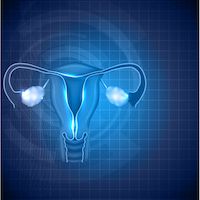Frontline Maintenance Niraparib Takes Step Toward EU Approval in Ovarian Cancer
The European Medicines Agency has validated a Type II Variation for niraparib as a first-line maintenance treatment for patients with advanced ovarian cancer who have responded to platinum-based chemotherapy, regardless of biomarker status.

The European Medicines Agency (EMA) has validated a Type II Variation for niraparib (Zejula) as a first-line maintenance treatment for patients with advanced ovarian cancer who have responded to platinum-based chemotherapy, regardless of biomarker status.1
The submission is based on findings from the phase III PRIMA (ENGOT-OV26/GOG-3012) trial, which demonstrated clinically meaningful outcomes with the PARP inhibitor in the frontline maintenance setting in this patient population. In the overall study population, niraparib led to a median progression-free survival (PFS) of 13.8 months compared with 8.2 months in patients who received placebo, leading to a 38% reduction in the risk of disease or progression or death (HR, 0.62; 95% CI, 0.50-0.76; P <.001).2,3
Specifically, in patients whose tumors were positive for homologous recombination deficiency (HRD), the median PFS with niraparib was 21.9 months compared with 10.4 months for placebo (HR, 0.43; 95% CI, 0.50-0.76; P <.001).
With the validation of the Type II Variation, the formal review process now begins of the EMA’s Committee for Medicinal Products for Human Use.
In February 2020, the FDA also accepted a supplemental new drug application for niraparib for use as a frontline maintenance treatment for women with advanced ovarian cancer who responded to platinum-based chemotherapy regardless of biomarker status. The decision was also based on the PRIMA findings.
In the double-blind PRIMA trial, investigators randomized 733 patients 2:1 to receive niraparib (n = 487) or placebo (n = 246). Patients were randomized within 12 weeks of finishing the last cycle of chemotherapy. At the initiation of the study, niraparib was given at a fixed dose of 300 mg, which was adjusted to include a lower dose of 200 mg for those weighing less than 77 kg and for those with platelet counts below 150K/μL. The median relative dose intensity in the study was 63%. Gonzalez-Martin noted that future presentations would focus on the potential impact of this dose change.
Patient characteristics were found to be similar across groups. The ECOG performance status was 1 for approximately 70% of patients, two-thirds of patients had a FIGO stage of III, and one-third had stage IV disease. The primary tumor locations were the ovary, fallopian tube, and peritoneum. The majority of patients had serous histology (~95%). Most patients had achieved a complete response to prior chemotherapy (70%). Two-thirds of patients received neoadjuvant chemotherapy, and none received bevacizumab (Avastin); the study was designed prior to approval of the VEGF inhibitor in the frontline setting.
The median overall survival (OS) was not yet reached at the interim analysis, at just 10.8% data maturity. At this early time point, however, the 24-month OS rate in the full population was 84% in the niraparib group and 77% in the placebo arm (HR, 0.70; 95% CI, 0.44-1.11). In the HRD-positive cohort, the 24-month OS rate was 91% with niraparib and 85% for placebo (HR, 0.61; 95% CI, 0.27-1.39).
Analysis of the HRD group was further broken down by BRCA status. For patients with a BRCA mutation, the median PFS was 22.1 months with niraparib compared with 10.9 months for placebo (HR, 0.40; 95% CI, 0.27-0.62). In those with HRD-positive tumors who were negative for a BRCA mutations, the median PFS was 19.6 versus 8.2 months for niraparib and placebo, respectively (HR, 0.50; 95% CI, 0.31-0.83).
The PFS benefit with niraparib over placebo was observed across several patient subgroups, including those with HRD-negative tumors. In this group, the median PFS was 8.1 months with niraparib and 5.4 months for placebo (HR, 0.68; 95% CI, 0.49-0.94). Interim OS data for HRD-negative patients showed a 24-month OS rate of 81% for niraparib compared with 59% for placebo (HR, 0.51; 95% CI, 0.27-0.97).
Regarding safety, more patients experienced all-grade, treatment-related adverse events (AEs) with niraparib compared with placebo (96.3% vs 68.9%). Grade ≥3 treatment-related AEs were experienced by 65.3% of patients in the niraparib arm compared with 6.6% of those in the placebo group. The most common grade ≥3 AEs in the niraparib and placebo groups, respectively, were anemia (31.0% vs 1.6%), thrombocytopenia (28.7% vs 0.4%), platelet count decrease (13.0% vs 0%), and neutropenia (12.8% vs 1.2%).
Overall, 70.9% of patients required a dose reduction in the niraparib arm, and 12% of patients discontinued therapy due to AEs. The main AEs relating to discontinuation were myelosuppressive in nature, with 4.3% from thrombocytopenia.
Currently, niraparib is approved as a maintenance treatment in the recurrent ovarian cancer setting, as well as for the treatment of patients with advanced ovarian, fallopian tube, or primary peritoneal cancer who have been treated with ≥3 prior chemotherapy regimens, and whose cancer is associated with HRD-positive status.
References
- European Medicines Agency accepts submission of GSK's Marketing Authorisation Application for Zejula (niraparib) in first-line maintenance treatment for women with platinum-responsive advanced ovarian cancer [news release]: London, United Kingdom. GlaxoSmithKline. Published February 27, 2020. https://prn.to/2T58RDk. Accessed February 27, 2020.
- Gonzalez-Martin A, Pothuri B, Vergote I, et al. Niraparib therapy in patients with newly diagnosed advanced ovarian cancer (PRIMA/ENGOT-OV26/GOG-3012 study). Ann Oncol. 2019;30(suppl_5):v851-v934. doi: 10.1093/annonc/mdz394
- Gonzalez-Martin A, Pothuri B, Vergote I, et al. Niraparib in patients with newly diagnosed advanced ovarian cancer [published online September 28, 2019]. N Engl J Med. doi: 10.1056/NEJMoa1910962



